Throughout the ancient world, mythology played a significant role in shaping the beliefs, values, and practices of societies. Roman mythology, with its complex pantheon of gods and goddesses, held a special place within ancient Roman society. The Romans derived their mythology from the traditions and narratives of the Greeks, but eventually developed their own unique set of deities and religious practices. The influence of Roman mythology extended into various aspects of daily life, including art, literature, education, and even political propaganda. This article explores the origins and purpose of Roman mythology, the roles of different deities, religious practices and rituals, the impact of mythology on art and literature, its integration into daily life, and its use as a tool for political propaganda. Understanding the significance of Roman mythology provides valuable insights into the beliefs and values of ancient Roman society, and highlights the enduring influence of mythological narratives throughout history.
The Origins and Purpose of Roman Mythology

Roman mythology has a rich and intricate history, but its origins can be traced back to the influence of Greek mythology. The Romans, known for their assimilation of different cultures and traditions, adapted and incorporated the Greek gods and goddesses into their own pantheon. This process, known as syncretism, allowed the Romans to create their own unique mythological system that reflected their values and beliefs. While the Greek gods and goddesses retained their names, their attributes and roles were sometimes modified to better align with Roman society. One example of this is Jupiter, the Roman equivalent of Zeus, who was not only the king of the gods but also the ruler of the heavens and the bringer of justice. The purpose of Roman mythology went beyond mere storytelling; it served as a means to explain the natural and social phenomena that ancient Romans encountered in their daily lives. By attributing these phenomena to the actions and traits of the gods and goddesses, Roman mythology provided a framework for understanding and interpreting the world around them.
Deities and Their Roles
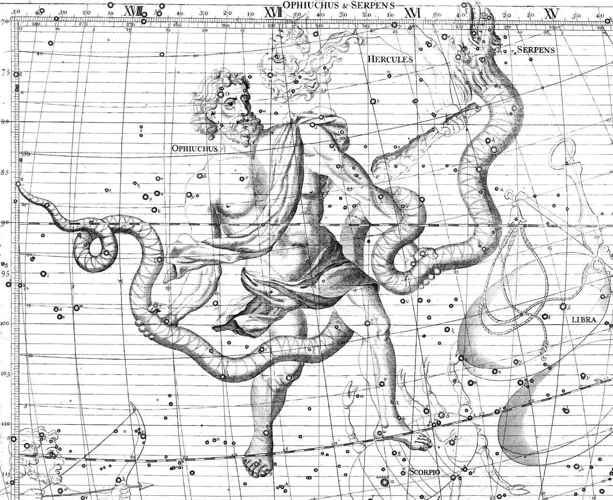
The Roman pantheon consisted of a diverse array of gods and goddesses, each with their own distinct roles and attributes. These deities played a crucial role in the lives of the ancient Romans, as they were believed to have direct influence over various aspects of human existence. Jupiter, the powerful king of the gods, was associated with thunder, lightning, and the protection of the Roman state. Venus, the goddess of love and beauty, was revered for her influence over matters of desire and relationships. Mars, the god of war, embodied the military prowess of the Roman people and was often invoked before battles for victory. Other major gods and goddesses included Neptune, the god of the sea, and Minerva, the goddess of wisdom and crafts. Additionally, there were numerous minor gods and goddesses who governed specific domains, such as Ceres for agriculture and Bacchus for wine and revelry. It is through the understanding of these deities and their roles that we gain insight into the values and beliefs of ancient Roman society. For more information on Roman heroes and legends, you can explore Roman Heroes, Myth, and Legend.
Major Gods and Goddesses
The Roman pantheon consisted of numerous major gods and goddesses, each with their own distinct roles and domains. These deities played a crucial role in the religious and cultural practices of ancient Rome. One of the most prominent gods in the Roman pantheon was Jupiter, the king of the gods, associated with thunder, lightning, and the sky. Jupiter was revered as the protector of the Roman state and was often depicted with a thunderbolt in hand. Juno, Jupiter’s wife and sister, was the goddess of marriage and childbirth. She was believed to watch over women and safeguard the institution of marriage. Neptune, the god of the sea, was highly venerated by seafarers and fishermen. Mars, the god of war, was one of the most revered deities in Roman society. He was associated with military prowess and served as the guardian of Rome. Venus, the goddess of love and beauty, played a significant role in Roman mythology. She was believed to bring prosperity and fertility to the people. Additionally, Apollo, the god of music, poetry, and healing, was regarded as a patron of the arts and medicine. These major gods and goddesses, among others, were central to Roman religious beliefs and worship, and their stories and attributes were intertwined with the fabric of Roman society and culture. Roman mythology featuring these deities can still be found depicted in various forms of art and literature, such as poetry and drama, highlighting their enduring influence on Roman civilization.
Minor Gods and Goddesses
Minor gods and goddesses played a crucial role in Roman mythology, although they often received less attention than their major counterparts. These minor deities were often associated with specific aspects of daily life, such as agriculture, household chores, and personal well-being. For example, Vesta, the goddess of the hearth, represented the sacred fire that was kept burning in every Roman home. She was revered as the guardian of the family and played a vital role in Roman religious rituals. Similarly, Ceres, the goddess of agriculture, was venerated for her association with the growth of crops and the fertility of the land. Demeter, the Greek equivalent of Ceres, also had a significant influence on Roman mythology, as her narrative was adapted to fit into the Roman pantheon. These minor gods and goddesses were not only worshipped in temples and shrines, but their presence extended into the daily lives of the Romans. They were invoked in prayers and rituals, with the belief that their favor and protection were vital for success and prosperity. The link between the minor deities and the foundational aspects of Roman life, such as the home and the harvest, further reinforced the significance of their roles within the ancient Roman society. For a deeper understanding of the legendary founding of Rome, visit /the-legendary-founding-of-rome/.
Religious Practices and Rituals
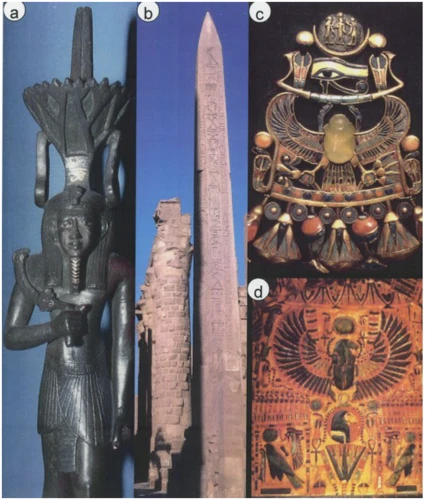
Religious practices and rituals were an integral part of ancient Roman society, deeply intertwined with the beliefs and worship of the gods and goddesses. Temples and shrines were essential structures where these practices took place. Temples, often grand and ornate, were dedicated to specific deities and served as sacred spaces for worship and offerings. Romans would visit these temples to pray for divine favor, guidance, and protection. Sacrifices and offerings played a crucial role in religious rituals. Animals, such as bulls, sheep, and pigs, were commonly sacrificed to appease the gods and seek their blessings. These rituals were performed by priests and priestesses, who acted as intermediaries between the mortal world and the divine realm. The rituals were highly structured, involving prayers, chants, and symbolic gestures. Offerings of food, wine, and other valuables were also presented to the gods as a sign of devotion and gratitude. These religious practices and rituals provided a sense of unity and purpose within the Roman community, reinforcing their connection to the gods and affirming their religious identity.
Temples and Shrines
Temples and shrines held a central role in the religious practices of ancient Rome, serving as sacred spaces dedicated to specific gods and goddesses. These structures were elaborate and grand, featuring impressive architecture and intricate designs. The temples were constructed to symbolize the divinity and power of the deities they were dedicated to, and were often located in prominent areas of the city. One iconic example is the Temple of Jupiter Optimus Maximus on the Capitoline Hill, which was dedicated to the king of the gods and served as the spiritual center of Rome. Inside these temples, statues and altars were placed as representations and focal points for worship. The Romans believed that by offering prayers and making sacrifices at these holy sites, they could establish a connection with the gods and seek their favor and protection. Additionally, smaller shrines were scattered throughout the city and countryside, allowing individuals to engage in personal acts of devotion. These shrines could be found in homes, street corners, and public spaces, providing places for both public and private worship. The temples and shrines served as physical embodiments of the divine presence in Roman society, fostering a sense of reverence and piety among the people.
Sacrifices and Offerings
Sacrifices and offerings were an integral part of religious practices in ancient Roman society, aimed at honoring and appeasing the gods. The Romans believed that the gods could be swayed and influenced through acts of devotion and sacrifice. These rituals were performed in temples and shrines dedicated to specific deities. The type and nature of sacrifices varied depending on the occasion and the deity being honored. Animals such as cattle, sheep, and pigs were commonly used as sacrificial offerings. The act of sacrifice was considered a solemn and sacred event, often performed by priests or religious officials. The rituals involved specific procedures and prayers, with the animal being led to the altar and then consecrated before being slaughtered. The blood and entrails were then carefully examined by the priests to interpret the divine will. In addition to animal sacrifices, the Romans also offered various other items such as fruits, wine, grain, and incense. These offerings were placed at the altars or statues of the gods and goddesses. The purpose of these sacrifices and offerings was to establish a connection with the divine, seeking their favor, protection, and guidance in return. The rituals reinforced the social and religious fabric of Roman society, providing a sense of unity and shared purpose.
Mythological Influence on Art and Literature
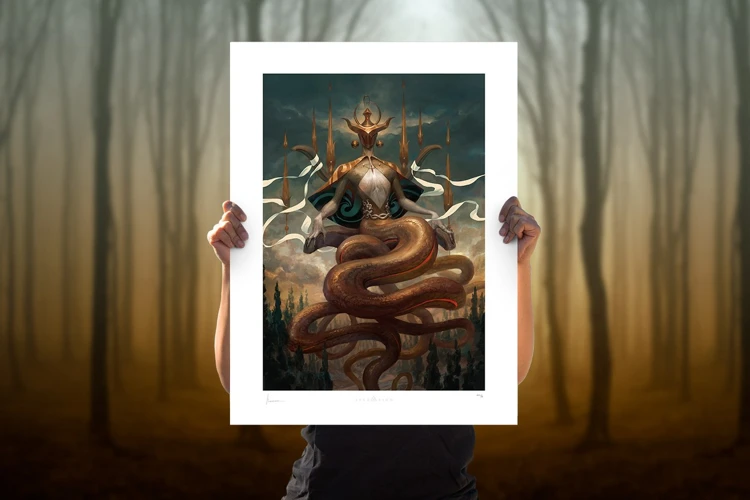
The influence of Roman mythology on art and literature was profound, permeating various forms of creative expression. In the realm of visual art, Roman mythology inspired intricate mosaics and vibrant frescoes that adorned walls and floors of public buildings and wealthy homes. These art forms depicted mythological scenes, featuring gods, goddesses, and legendary heroes in vivid detail. They served not only as decorative embellishments but also as a means to convey moral and philosophical messages. In literature, Roman mythology provided a vast repertoire of stories and characters that writers drew upon for inspiration. Poets like Ovid, through his epic poem “Metamorphoses,” brought these myths to life, offering intricate narratives that explored the complexities of human nature and the workings of the divine. Mythological themes were also prevalent in dramatic performances, with playwrights incorporating elements of Roman mythology into their works, captivating audiences with tales of heroism, tragedy, and divine intervention. The incorporation of mythology into art and literature allowed for the preservation and dissemination of these stories, ensuring their enduring legacy.
Mosaics and Frescoes
Mosaics and frescoes played a significant role in the portrayal and representation of Roman mythology in art. Mosaics, made from small colored tiles called tesserae, were used to create intricate and detailed images on floors, walls, and even ceilings. These mosaics depicted scenes from mythology, showcasing the stories and legends of the gods and goddesses in a visual form. One famous example is the House of the Faun in Pompeii, where the Battle of Alexander the Great and the god Apollo’s defeat of the giant Tityos were depicted in vibrant mosaic designs. These mosaics served not only as decorative elements but also as a way to showcase the importance and influence of Roman mythology in everyday life.
Frescoes, on the other hand, were paintings made on wet plaster. They adorned the interiors of Roman buildings and often depicted mythological scenes and figures. The frescoes acted as visual narratives, bringing the stories of Roman mythology to life. One prominent example is the Villa of the Mysteries in Pompeii, where a series of frescoes depicted the initiation rites of a Dionysian cult. These frescoes not only showcased the belief in and devotion to the gods but also served as a means of representing and exploring important cultural and religious rituals.
The use of mosaics and frescoes in the context of Roman mythology provided a visual medium through which the gods and goddesses could be worshipped and revered. These artistic representations aimed to remind the viewers of the power, divinity, and significance of the mythological narratives in Roman society. The intricate details, vibrant colors, and skillful craftsmanship of these artworks not only displayed the artistic talent of the Romans but also showcased their deep devotion and belief in the gods and goddesses that shaped their worldview.
Poetry and Drama
Poetry and drama held a prominent place in ancient Roman society, and Roman mythology greatly influenced the themes and narratives of these artistic forms. Poets and playwrights often drew inspiration from mythological stories and incorporated them into their works. One notable example is Virgil’s epic poem, “The Aeneid,” which tells the legendary tale of Aeneas, a Trojan hero who journeys to Italy and becomes the ancestor of the Romans. The poem not only explores Aeneas’ adventures but also connects the origins of Rome to the gods and goddesses of Roman mythology. The work emphasizes the divine guidance and intervention experienced by Aeneas, making it a powerful tool for promoting the significance and legitimacy of Rome’s founding. Additionally, drama played a crucial role in Roman society, with performances taking place during various religious festivals. Plays often depicted mythological stories, providing both entertainment and moral lessons for the audience. Comedies and tragedies showcased the struggles of mortals with the whims and machinations of the gods, emphasizing themes of fate, honor, and moral responsibility. The influence of Roman mythology in theater allowed the audience to reflect on their own lives and societal values while offering a form of escapism and entertainment. The intertwining of mythology and these artistic expressions demonstrates the enduring impact of Roman mythology on the cultural fabric of ancient Rome.
Mythology in Daily Life
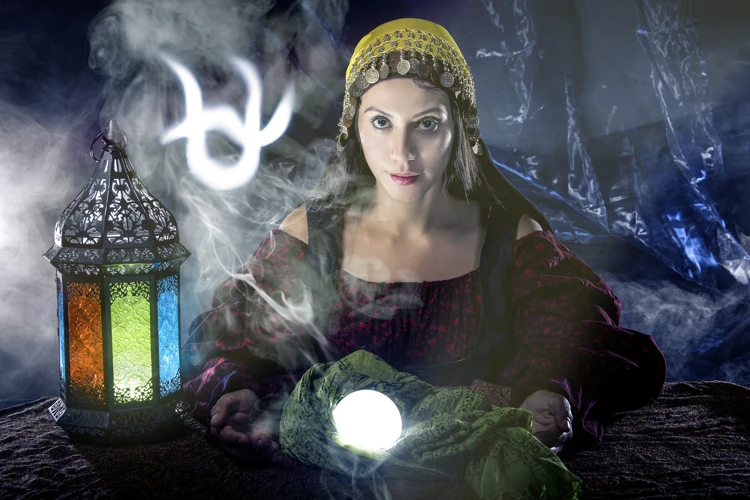
Mythology played a significant role in the daily lives of ancient Romans, permeating various aspects of their society. In terms of education and morality, myths were utilized as teaching tools to instill important values and virtues in the younger generation. Children would learn about heroes like Hercules, who embodied strength and perseverance, or goddesses like Minerva, who symbolized wisdom and intellect. Additionally, mythology influenced the naming and family customs of the Romans. Many individuals were named after gods and goddesses, with the belief that they would inherit certain traits or protective powers associated with their namesakes. Family customs such as rites of passage and marriage ceremonies often incorporated mythological references and rituals. These practices not only connected individuals to their ancestors but also reinforced the importance of mythology as a cultural and social framework.
Education and Morality
Education played a crucial role in ancient Roman society, and Roman mythology was incorporated into the educational system to instill moral values and virtues in the youth. Children were taught about the gods and goddesses, their myths and legends, as a way to impart lessons about ethics, courage, justice, and loyalty. The stories of heroic figures such as Hercules, Achilles, and Aeneas served as moral examples and were believed to inspire virtues in the young minds. Roman schools emphasized the memorization and recitation of these mythological tales, which helped to develop the students’ memory and oratory skills. In addition to the moral teachings, the study of mythology also provided a broader cultural education, teaching Roman history, lineage, and the importance of tradition. The emphasis on education and morality through mythology reflected the Roman belief in the importance of an upright and virtuous citizenry for the stability and success of the empire.
Naming and Family Customs
Naming and family customs held a significant place in ancient Roman society, and mythology played a role in shaping them. Parents often chose names for their children based on their desired qualities or aspirations. For example, a child named “Venus” would symbolize beauty and love, while “Mars” would represent strength and valor. These names connected individuals to the mythology and emphasized certain virtues. Family customs were influenced by mythology. Roman families traced their origins back to mythical figures, such as the legendary Romulus and Remus, who were said to have founded Rome. This belief in divine ancestry elevated the status of certain families and created a sense of shared heritage. Roman families embraced the concept of lares, household gods who protected the home and its inhabitants. Family members would participate in rituals and prayers dedicated to the lares, reinforcing the connection between mythology, family, and daily life. These naming practices and family customs woven with mythological elements added depth and meaning to the fabric of Roman society.
Mythology and Political Propaganda
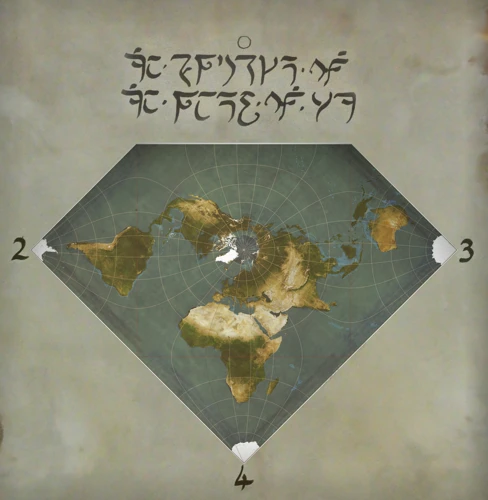
Mythology held a significant role in ancient Roman politics, serving as a powerful tool for propaganda and legitimizing the ruling class. By associating themselves with the gods and their divine attributes, Roman emperors sought to solidify their authority and divine connections. The divine connections were often established through public ceremonies and rituals, where emperors were worshipped and hailed as living gods. This strategy aimed to cultivate a sense of awe and reverence towards the emperor, reinforcing the notion of his divine right to rule. Additionally, mythological narratives were employed to shape public opinion and justify political decisions. Emperors depicted themselves as successors to legendary figures from Roman mythology, such as Romulus, the legendary founder of Rome. Through these associations, emperors sought to reinforce their legitimacy and establish a sense of continuity with the mythical past. Mythology played a crucial role in the realm of politics, allowing emperors to shape public perception, consolidate power, and maintain control over the Roman Empire.
Divine Connections and Legitimacy
Divine Connections and Legitimacy played a crucial role in Roman mythology and political propaganda. The Roman emperors sought to establish a connection between themselves and the gods as a means of legitimizing their rule. They utilized the stories and genealogies of the gods to emphasize their divine ancestry and reinforce their authority. For example, Augustus, the first Roman emperor, claimed descent from Venus, the goddess of love and beauty. By associating himself with such a revered deity, Augustus sought to enhance his reputation and secure the support of the Roman people. This divine connection was further strengthened through various religious rituals and ceremonies. Emperors were often portrayed in artwork or depicted in statues alongside gods and goddesses, symbolizing their divine status and close relationship with the divine realm. Additionally, the emperors introduced the imperial cult, a form of worship specifically dedicated to the reigning emperor. This cult further solidified the emperor’s divine connections and reinforced their legitimacy in the eyes of the Roman populace. The use of divine connections and legitimacy in Roman mythology and political propaganda exemplifies the power of mythology in shaping beliefs and justifying political authority.
Emperor Worship
Emperor worship was a distinctive aspect of Roman mythology and played a crucial role in the political and religious practices of ancient Rome. As the Roman Empire expanded, the emperors began to be deified, and their worship was integrated into the religious framework of the society. This act of emperor worship was not meant to replace the traditional gods and goddesses but was seen as an extension of the divine order. Emperors were hailed as divinely chosen rulers and were associated with deities such as Jupiter or Apollo. This practice served multiple purposes. First, it legitimized the authority and power of the emperors by aligning them with the gods. It reinforced the notion of the emperors as the protectors and benefactors of the Roman people. Second, emperor worship helped to foster loyalty and solidarity within the empire. By recognizing the emperor as a divine figure, it created a sense of unity and common identity among the diverse population of the empire. Third, it served as a form of political propaganda, reinforcing the emperor’s role as the supreme leader and promoting his image to the public. Emperor worship was often accompanied by grand ceremonies, public sacrifices, and the construction of temples dedicated to the emperor’s cult. These rituals and practices further elevated the status of the emperors and solidified their place within the religious and political fabric of Roman society.
Decline and Transformation of Roman Mythology
As the Roman Empire expanded and came into contact with other cultures and belief systems, the once dominant Roman mythology began to decline and transform. One of the major factors contributing to its decline was the spread of Christianity, which offered a new monotheistic perspective that clashed with the polytheistic nature of Roman mythology. Christianity gained popularity and eventually became the official religion of the empire under Emperor Constantine in the 4th century AD. This shift in religious allegiance led to the suppression of traditional Roman religious practices and the dismantling of temples dedicated to the Roman gods. The decline of Roman mythology was also influenced by factors such as urbanization, social changes, and the increasing emphasis on rationality and science.
As Christianity gained more prominence, many aspects of Roman mythology were assimilated or transformed into Christian practices. This process, known as syncretism, allowed for a smoother transition from the old mythological beliefs to the new Christian faith. For example, many Roman holidays and festivals were Christianized, with existing celebrations and rituals repurposed to honor Christian saints and events. Additionally, certain figures from Roman mythology were reinterpreted as Christian saints or biblical characters, further blurring the lines between the old and new belief systems.
Despite its decline, remnants of Roman mythology can still be found in modern culture, particularly in the form of literary and artistic works that draw inspiration from ancient myths. The enduring fascination with Roman mythology is a testament to its lasting impact on human imagination and storytelling. Whether in literature, art, or even popular culture, the tales of Roman gods and goddesses continue to captivate and inspire, preserving their legacy even in the face of a changing world.
Conclusion
In conclusion, Roman mythology held immense significance in ancient Roman society. It originated from the influence of Greek mythology but eventually evolved into a distinct and complex system of beliefs. The purpose of Roman mythology went beyond entertainment, serving as a means to explain natural, social, and moral phenomena. Through their stories and narratives, the gods and goddesses provided guidance and moral lessons to the Roman people, shaping their values and behavior. Mythology also permeated various aspects of daily life, influencing art, literature, education, and even political propaganda. It provided a framework for understanding the world and our place within it. Over time, Roman mythology experienced transformations and adaptations, but its legacy continued to influence subsequent civilizations, leaving a lasting impact on human culture and imagination. By studying and appreciating Roman mythology, we gain insights into the beliefs, values, and creative expressions of one of history’s most influential societies.
Frequently Asked Questions
1. What is the difference between Greek and Roman mythology?
Greek and Roman mythology share many similarities, but there are some key differences. While the Romans borrowed heavily from Greek mythology, they adapted the stories and deities to align with their own cultural values and beliefs. Additionally, Greek mythology often focuses on individual heroism, while Roman mythology places more emphasis on collective achievements and the glory of Rome.
2. Who were the major gods and goddesses in Roman mythology?
The major gods and goddesses in Roman mythology included Jupiter (Zeus), Mars (Ares), Venus (Aphrodite), Neptune (Poseidon), and Minerva (Athena). These deities held significant roles and were highly revered by the Romans.
3. Were there any minor gods and goddesses in Roman mythology?
Yes, there were numerous minor gods and goddesses in Roman mythology. Examples include Bacchus (Dionysus), the god of wine and revelry, and Mercury (Hermes), the messenger of the gods and the god of commerce and travel.
4. How did Romans practice their religious beliefs?
Romans practiced their religious beliefs through various rituals and ceremonies. They built temples and shrines dedicated to specific gods and goddesses, and regularly made offerings and sacrifices to appease them.
5. What were some common rituals and offerings in Roman mythology?
Common rituals in Roman mythology included prayers, processions, and the burning of incense. Offerings could range from simple items like food and wine to more elaborate sacrifices of animals.
6. How did Roman mythology influence art and literature?
Roman mythology had a profound impact on both art and literature. Mosaics and frescoes often depicted mythological scenes, serving as a visual representation of the stories and beliefs. In literature, epic poems like Virgil’s “Aeneid” and Ovid’s “Metamorphoses” showcased the rich tapestry of Roman mythology.
7. How did Roman mythology affect daily life?
Roman mythology permeated various aspects of daily life, including education and morality. Children were taught myths as a way to learn moral lessons and understand the societal values upheld by the gods and goddesses. Additionally, naming conventions and family customs often drew inspiration from mythological figures.
8. How did Roman mythology serve as political propaganda?
Roman emperors and political leaders often used mythology as a tool for propaganda. By associating themselves with mythological figures and using divine connections to justify their rule, they sought to legitimize their power and inspire devotion among the Roman populace.
9. Did Roman mythology decline over time?
With the rise of Christianity, belief in Roman mythology gradually declined. As Christianity became the dominant religion in the Roman Empire, many aspects of Roman mythology were either abandoned or assimilated into Christian practices.
10. Can we still see the influence of Roman mythology today?
Absolutely! The influence of Roman mythology can still be seen in various aspects of modern society. Many of the Roman gods and goddesses have been incorporated into contemporary art, literature, and popular culture. Additionally, numerous Roman myths and legends continue to inspire new works and interpretations.








